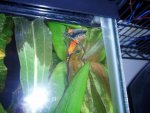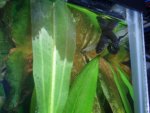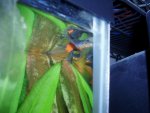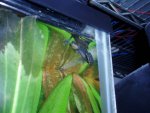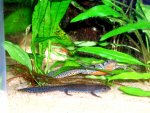ravenous
New member
I got 3 MAA a few weeks back and 2 were great where as one seemed to just float in the tank. So fearing injury from the journey I quarantined him in shallow water just over his back with land a folded napkin. He was there for about 2 weeks and seemed fine; ate, got on land, and underwater. So I decided to see how he acts in the tank. After bieng near land but underwater he NEVER submerges and looks like he cant swim! He twists himself up and acts like he cant function, almost like he had a stroke. He walks on land (my hand) just fine but doesnt swim or anything, when he tries, his body stays in a U shape. I took a few pics before taking him back out to further help him but I dont know what kind of injury or problem he has or if he will ever be cured from it. Here are some pics to paint the story.


